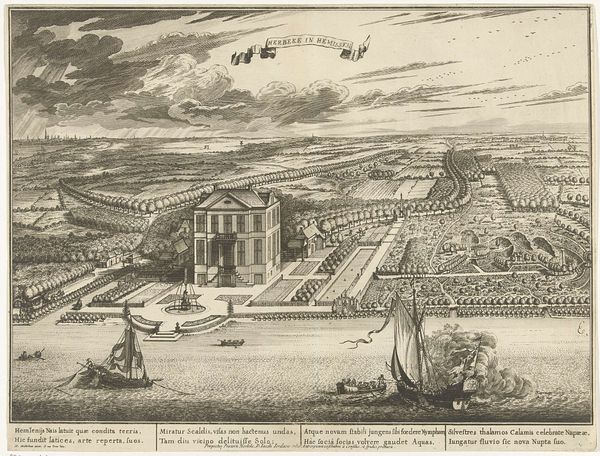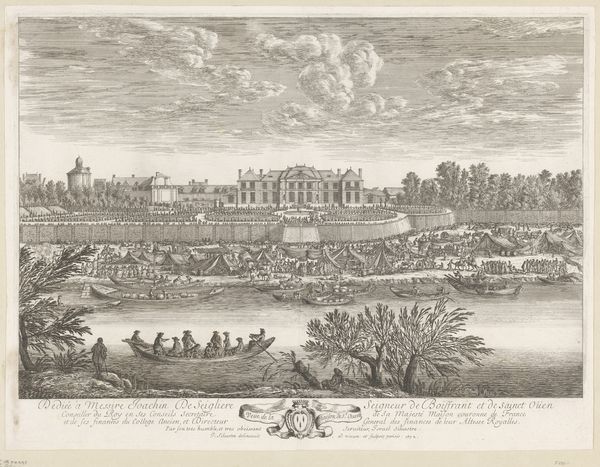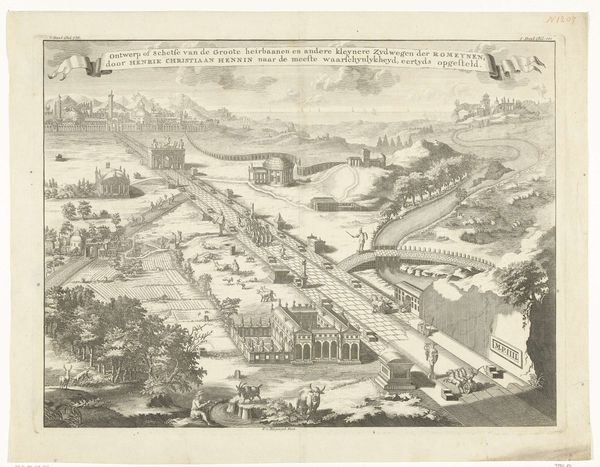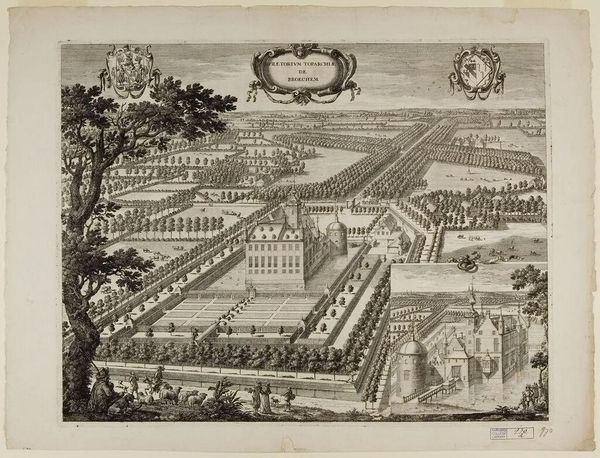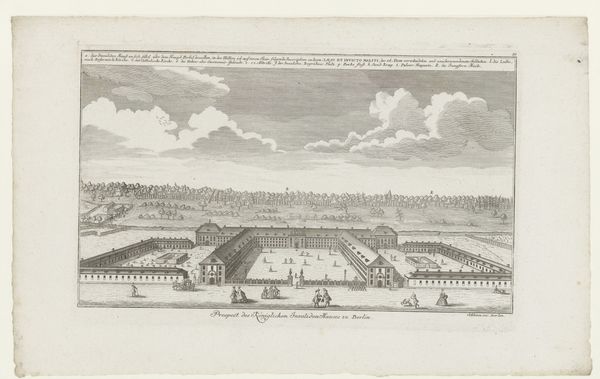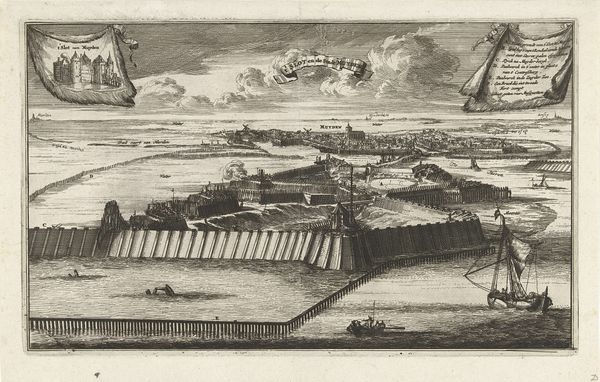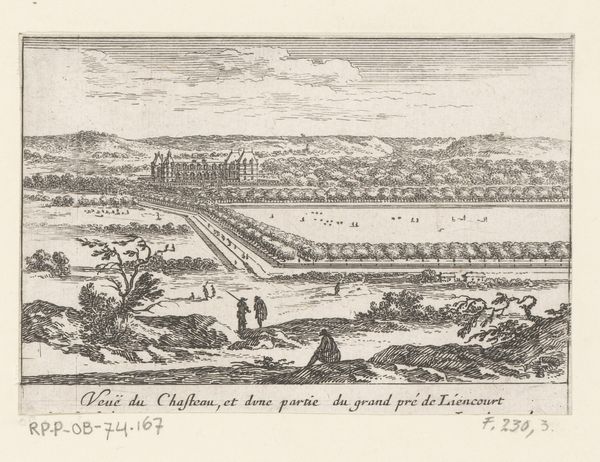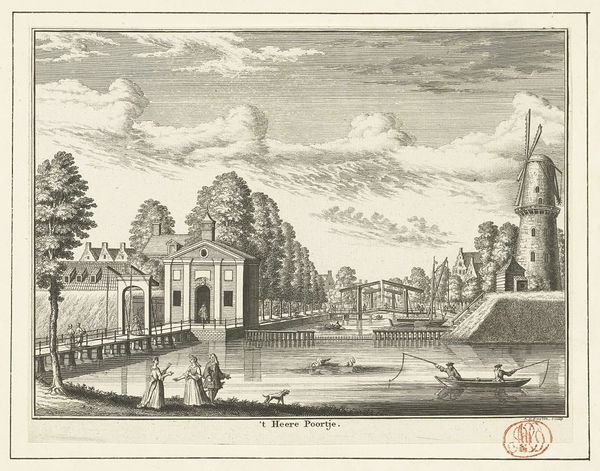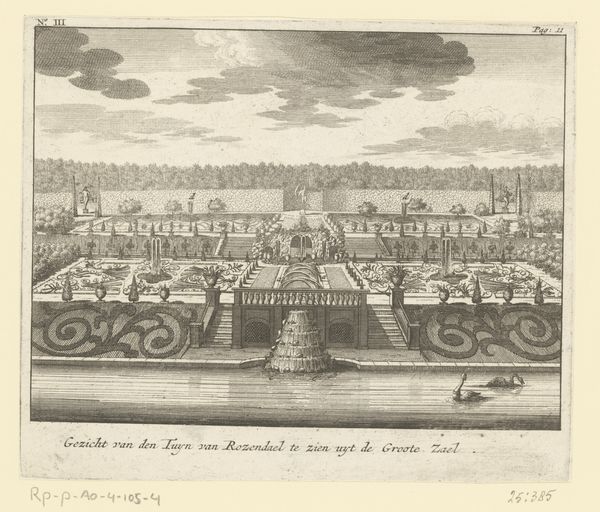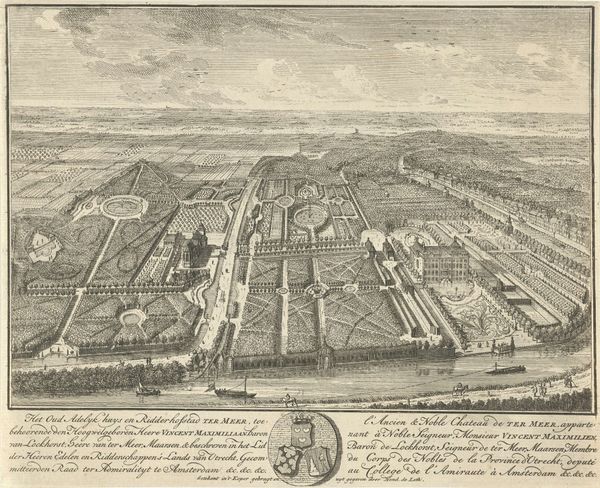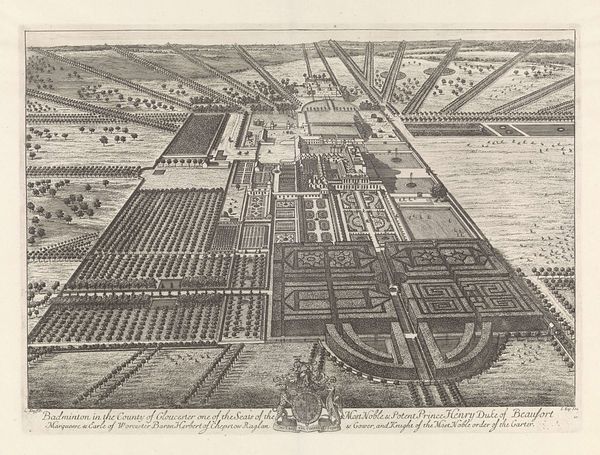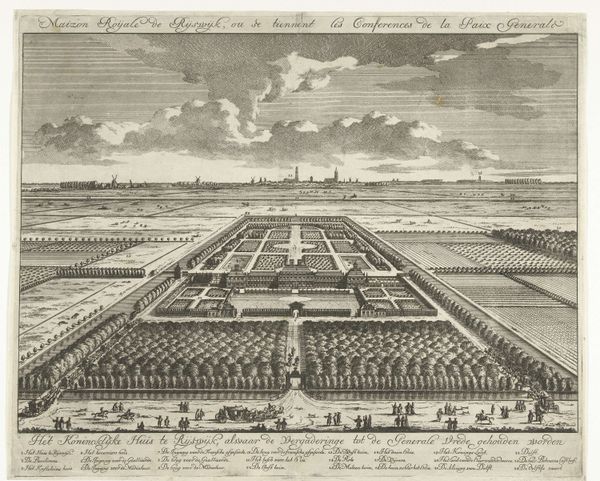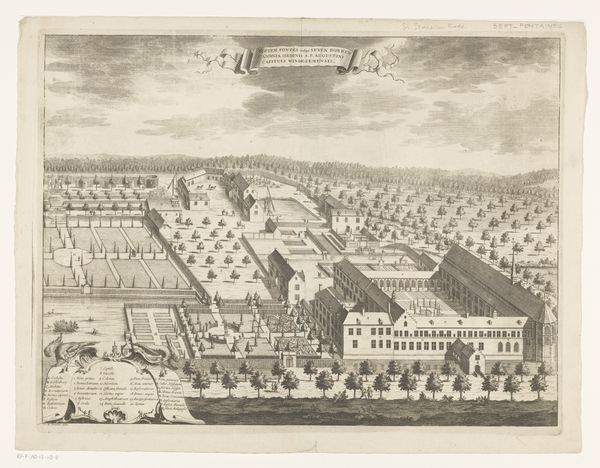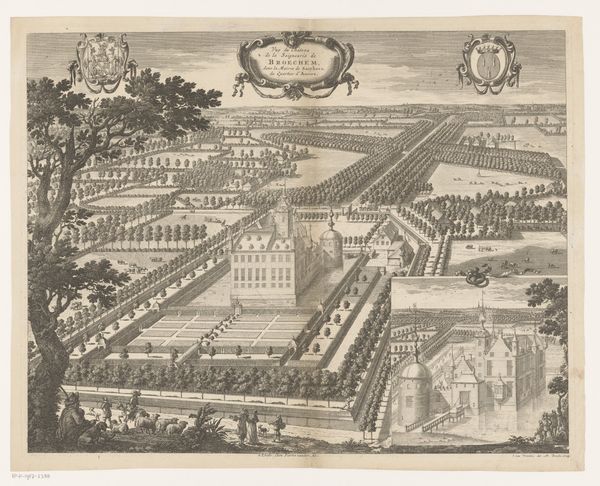
print, engraving, architecture
#
baroque
# print
#
old engraving style
#
landscape
#
perspective
#
cityscape
#
decorative-art
#
engraving
#
architecture
Dimensions: height 578 mm, width 772 mm
Copyright: Rijks Museum: Open Domain
Curator: Here we have “View of the Favoriten Garden on the Rhine,” an engraving by Johann August Corvinus, likely created between 1693 and 1738. What strikes you first about it? Editor: The overwhelming detail, a visual feast. It's almost architectural in its precision, this elaborate landscape unfolds like a map, but a map with a soul. How does Corvinus achieve this depth and perspective using only lines? Curator: The material processes are fascinating, aren’t they? Think of the skilled labor needed for such a print. Engraving wasn’t simply about artistic vision, but specialized work, meticulously etching lines into the metal plate. The proliferation of images like this also speaks to evolving modes of information dissemination and social consumption during this period. Editor: Yes, and how those lines themselves function. See how the density and direction articulate volume and light? The composition—the way the artist guides our eye from the detailed foreground gardens to the hazy cityscape beyond is remarkably skillful, isn't it? It has a Baroque drama through meticulous execution. Curator: But it's also vital to remember that those visual qualities reflect societal hierarchies. Gardens like these weren't mere aesthetics; they were potent displays of wealth and control. Consider the human labor required to construct and maintain this idealized nature – a statement of dominance in itself. The means of this print's production and the society's wealth at that time enabled the garden's physical structure, which speaks to its ideological structures. Editor: True. We cannot ignore how the structure mirrors power. Yet, it’s more than just that. Note how Corvinus employs visual devices such as framing the composition with those majestic trees, drawing our focus towards the manicured splendor. And observe the tonal range, that delicate interplay between light and shadow…It almost seems tactile. Curator: For me, the really exciting dimension comes from recognizing the layers of work and cultural values encoded here. The print enables broad viewership, the garden represents land ownership, and together they promote an unsustainable way of relating to land, labor and capital. What might be different if different practices were put into production? Editor: Perhaps...But even beyond all of the commentary on class and the human cost of production and acquisition that the garden symbolizes, I appreciate its masterful design. What a stimulating, intricate achievement in printmaking. Curator: Agreed. And that, too, makes it all the more complex.
Comments
No comments
Be the first to comment and join the conversation on the ultimate creative platform.
